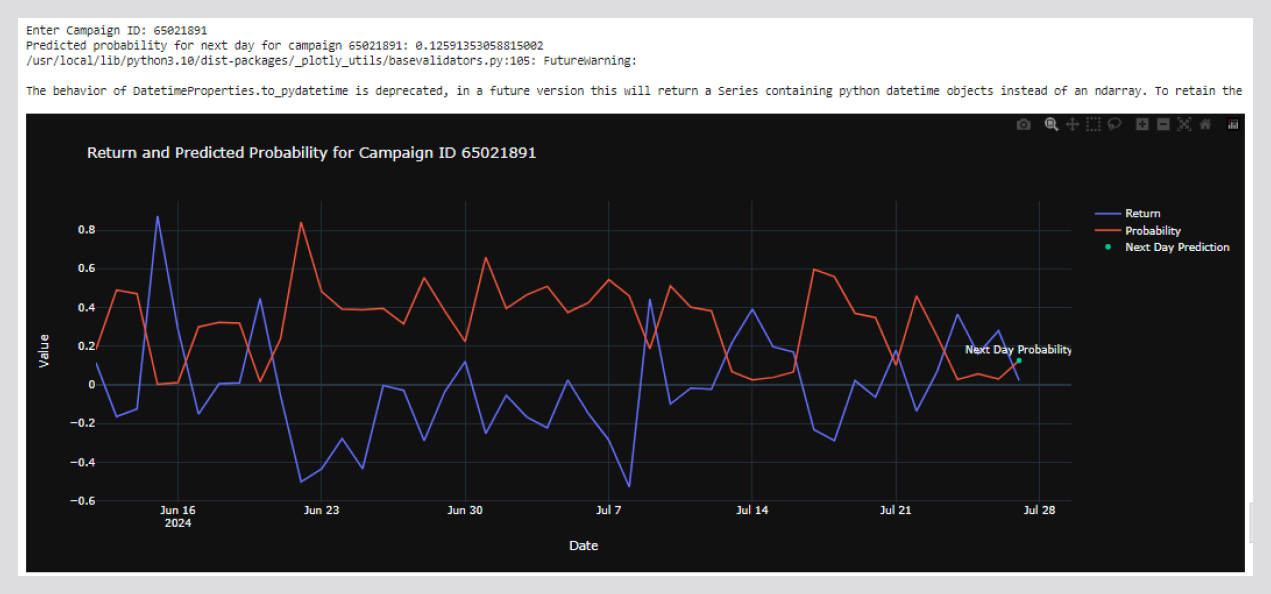Predicting Return Shifts in Arbitrage Click Trading

In this project, I developed a predictive model for arbitrage click trading in digital marketing campaigns. The model forecasts the probability of returns shifting from positive to negative based on historical CPC and RPC data. The goal is to optimize investment decisions and minimize losses.






